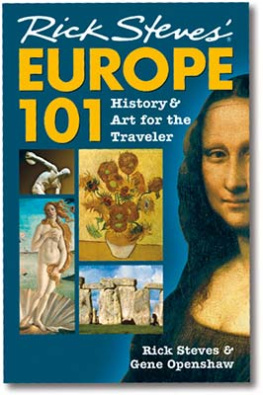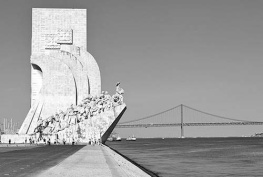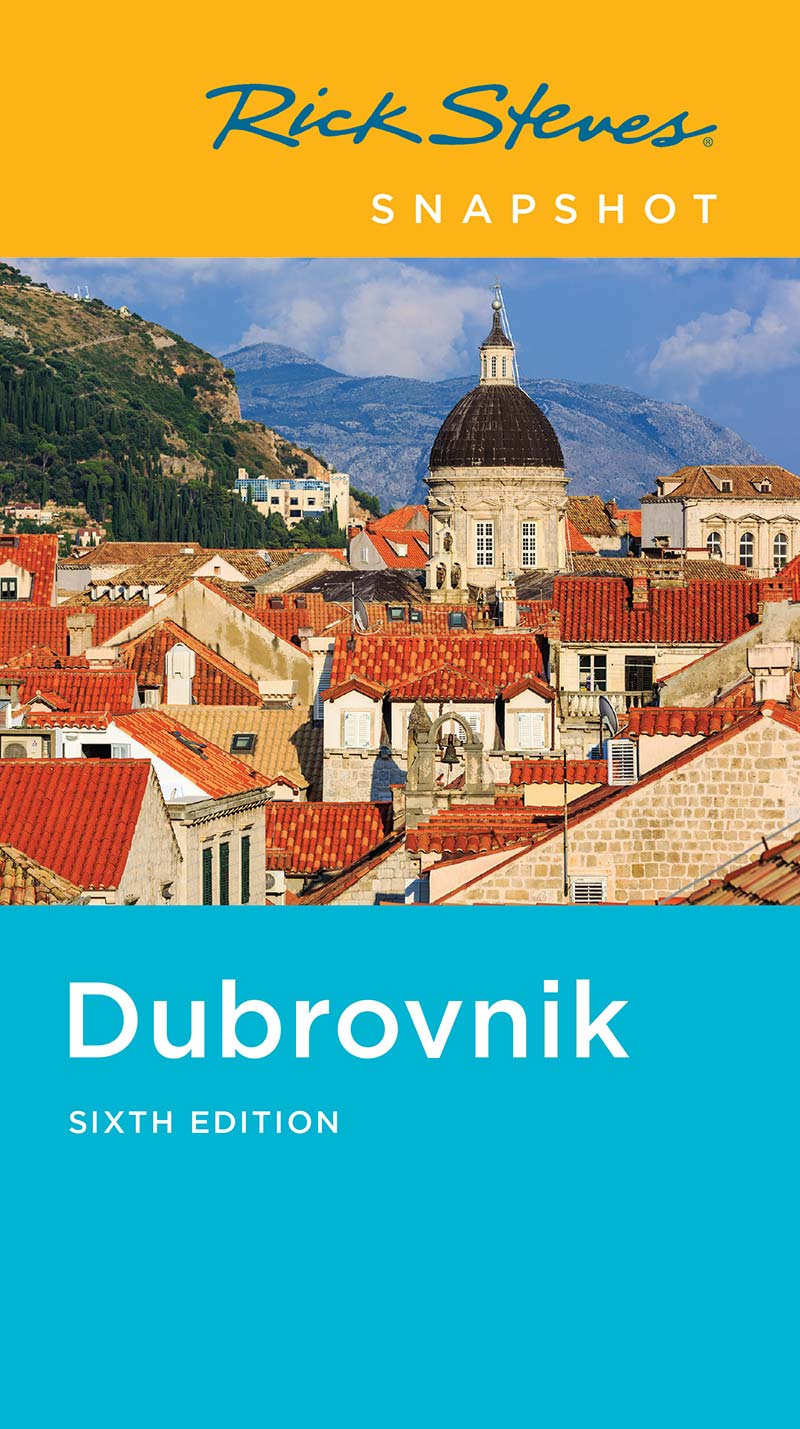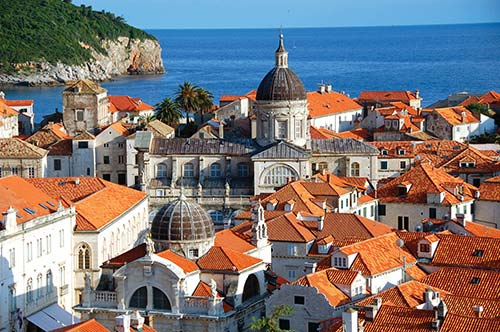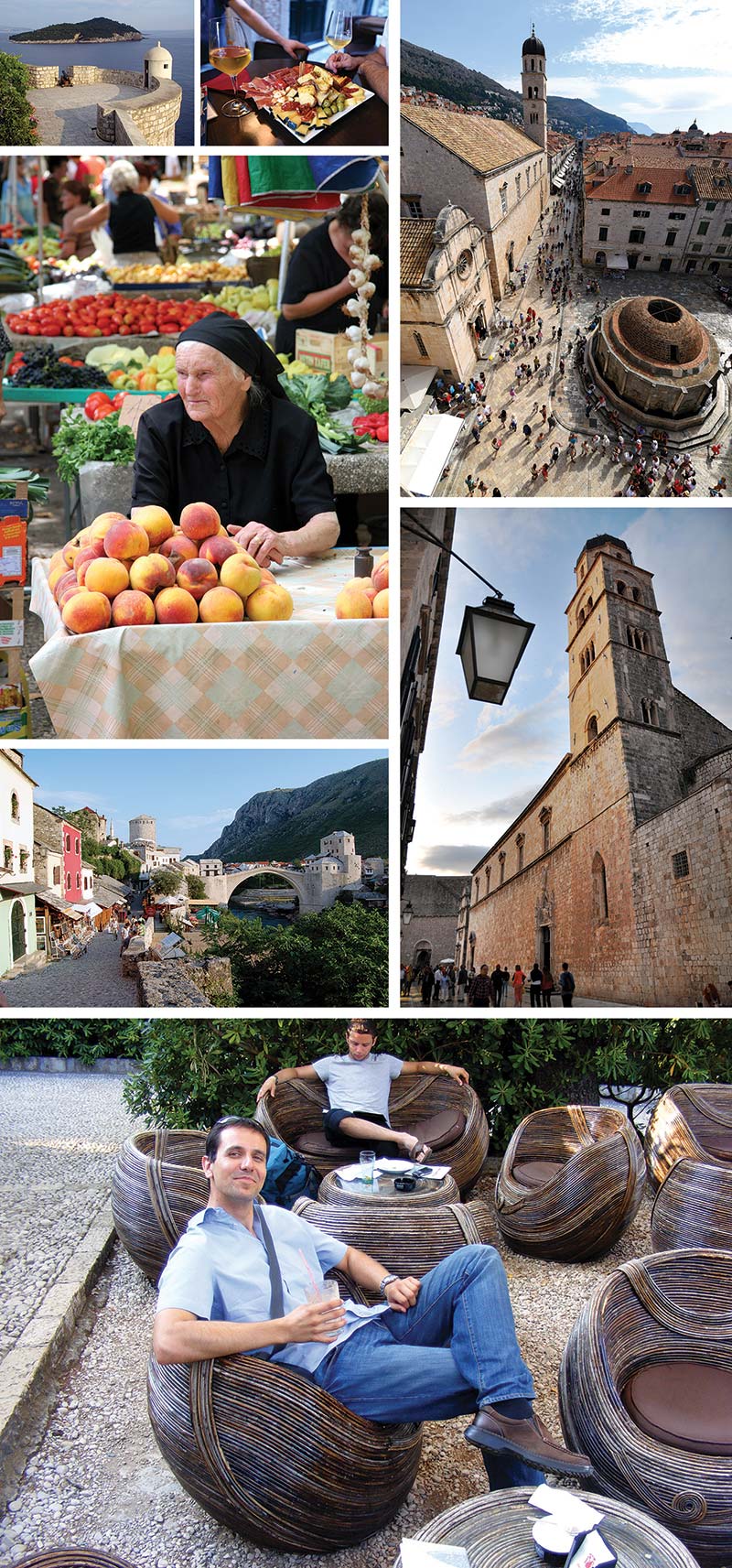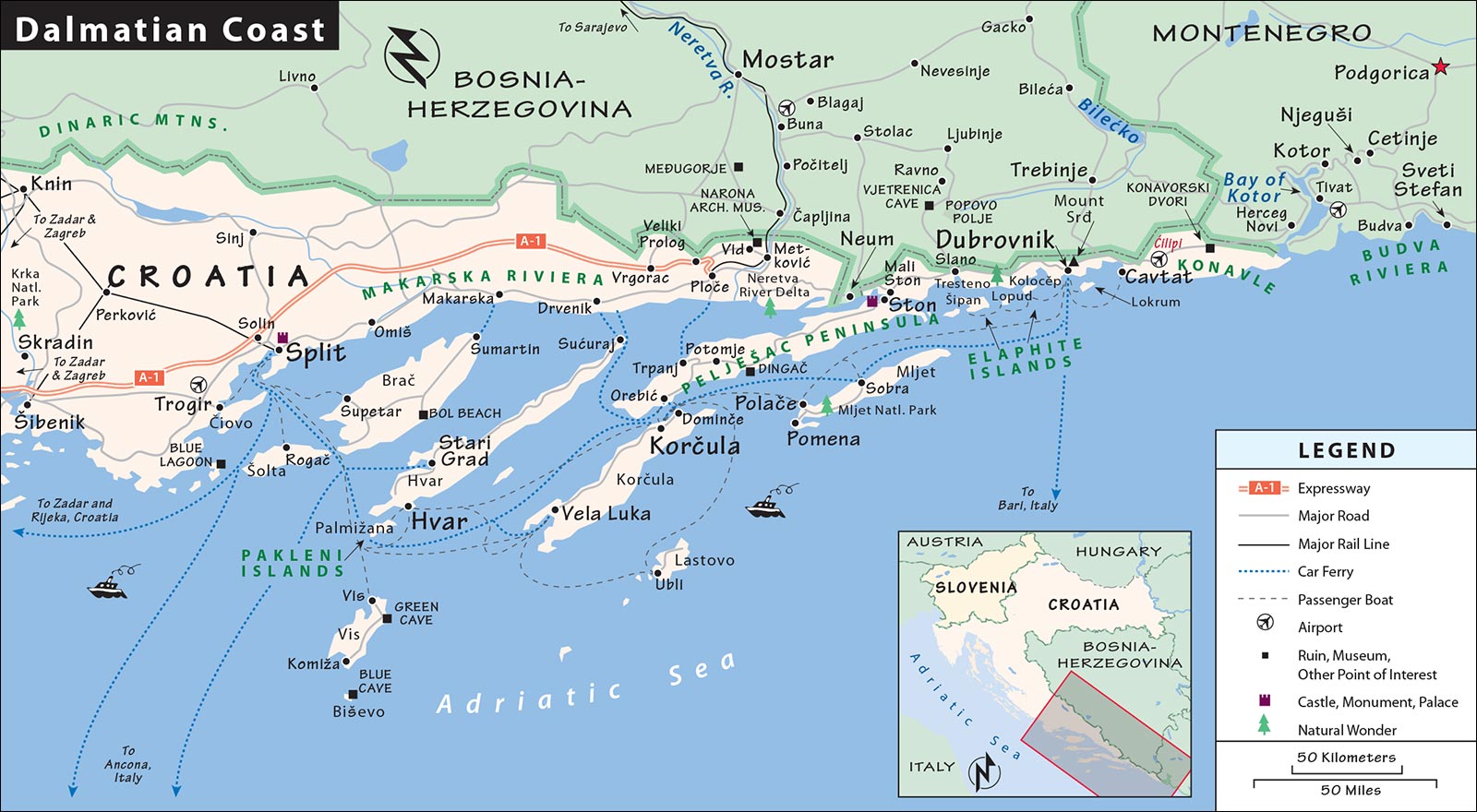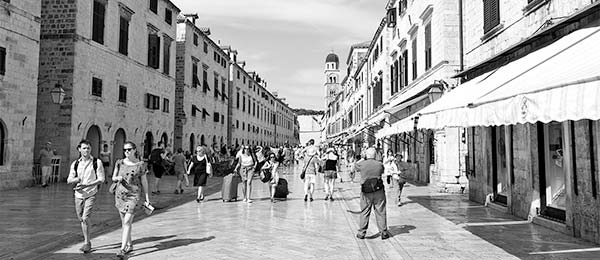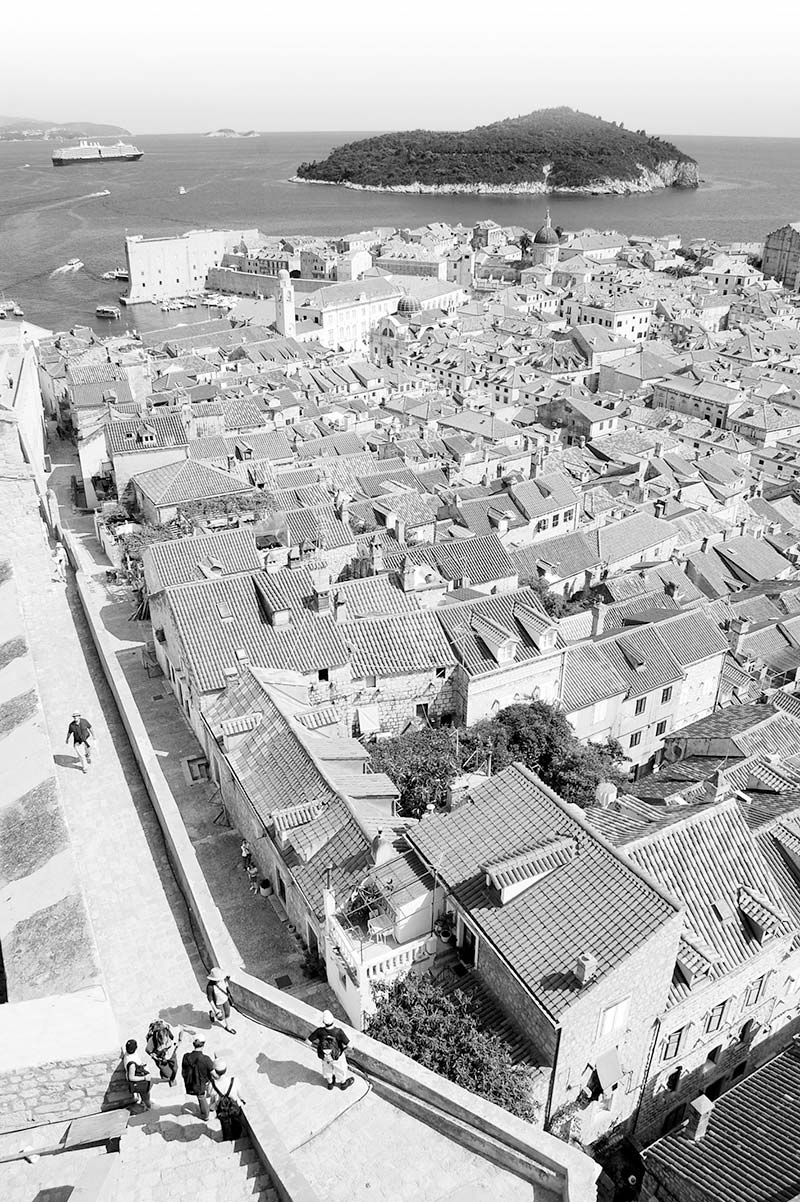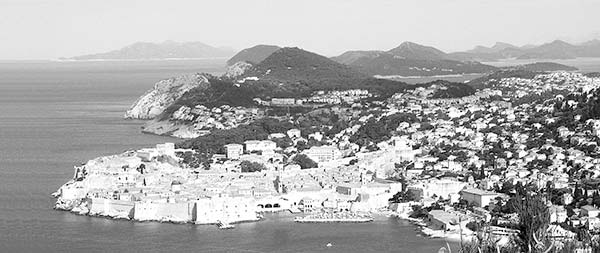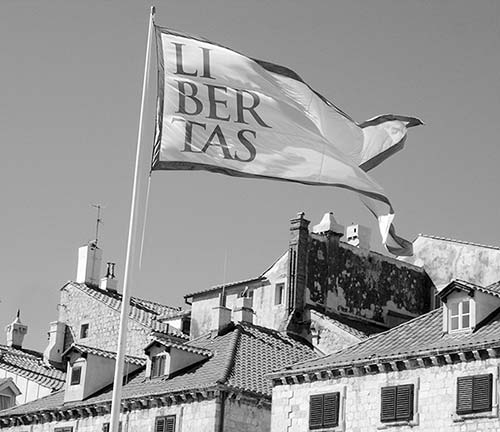Contents
Contents
Rick Steves
SNAPSHOT
Dubrovnik
This Snapshot guide, excerpted from my guidebook Rick Steves Croatia & Slovenia, introduces you to Croatias single best destination, the Pearl of the AdriaticDubrovnik. This magnificent medieval city, encircled by a stout wall and poking proudly into the sea, comes with an epic history and plenty of ways to idle away your vacation days. Climb steep steps to the top of the citys imposing stone walls and stroll high above Dubrovniks patchwork of red roof tiles. Promenade down the inviting main drag, dropping into churches and an eclectic smattering of museumshistory, art, folk life, war photography, and the Jewish and Orthodox faiths. Hit the beach and go for a swim in the crystal-clear waters of the Adriatic.
While there are many island and resort-town side-trips from Dubrovnik, this book emphasizes a diverse pair of neighboring countries that offer a more culturally stimulating look at the region: Bosnia-Herzegovina and Montenegro. Mostar, one of Bosnia-Herzegovinas leading cities, is a fascinating combination of Ottoman (Turkish) history, Muslim faith, welcoming locals, lingering war damage, and inspiring postwar reconciliation. Rugged, scenic Montenegro, just south of Dubrovnik, is an emerging Mediterranean hotspotespecially the historic old town of Kotorbut deep in its mountains, youll find echoes of a bygone kingdom.
To help you have the best trip possible, Ive included the following topics in this book:
Planning Your Time, with advice on how to make the most of your limited time
Orientation, including tourist information (abbreviated as TI), tips on public transportation, local tour options, and helpful hints
Sights with ratings:
Dont miss
Try hard to see
Worthwhile if you can make it
No ratingWorth knowing about
Sleeping and Eating, with good-value recommendations in every price range
Connections, with tips on driving, buses, and boats
The Understanding Yugoslavia chapter offers a simplified explanation of the history of this complex part of Europe.
Practicalities, near the end of this book, has information on money, staying connected, accommodations, transportation, and other helpful hints, plus Croatian survival phrases.
To travel smartly, read this little book in its entirety before you go. Its my hope that this guide will make your trip more meaningful and rewarding. Traveling like a temporary local, youll get the absolute most out of every mile, minute, and dollar.
Sretan put! Happy travels!
Dubrovnik is a living fairy tale that shouldnt be missed. It feels like a small town today, but 500 years ago, the city was a major maritime power, with the third-biggest navy in the Mediterranean. Still jutting confidently into the sea and ringed by thick medieval walls, Dubrovnik deserves its nickname: Pearl of the Adriatic. Within the ramparts, the traffic-free Old Town is a fun jumble of steep alleys, low-impact museums, al fresco cafs, and kid-friendly squares. After all these centuries, the buildings still hint at old-time wealth, and the central promenade (Stradun) remains the place to see and be seen.
The citys charm is the result of its no-nonsense past. Busy merchants, the salt trade, and shipbuilding made Dubrovnik rich. But Dubrovniks most valued commodity was always its freedomeven today, youll see the proud motto Libertas displayed all over town (see Libertas sidebar).
Dubrovnik flourished in the 15th and 16th centuries, but an earthquake (and ensuing fire) destroyed nearly everything in 1667. Most of todays buildings in the Old Town are post-quake Baroque, although a few palaces, monasteries, and convents displaying a rich Gothic-Renaissance mix survive from Dubrovniks earlier Golden Age. Dubrovnik remained a big tourist draw through the Tito years, bringing in much-needed hard currency from Western visitors. Consequently, the city never acquired the hard socialist patina of many other Yugoslav cities.
As Croatia violently separated from Yugoslavia in 1991, Dubrovnik became the only coastal city to be pulled into the fighting (see The Siege of Dubrovnik sidebar, later). Imagine having your youthful good memories of romping in the surrounding hills replaced by visions of tanks and warships shelling your hometown. The city was devastated, but Dubrovnik was repaired with amazing speed. The only physical reminders of the war are lots of new, bright-orange roof tiles. Locals are often willing to talk openly about the experience with visitorsoffering a rare opportunity to grasp the realities of war from an eyewitness perspective.
Libertas
Libertaslibertyhas always been close to the heart of every Dubrovnik citizen. Dubrovnik was a proudly independent republic for centuries, even as most of Croatia fell under Venetian or Hungarian rule.
In the Middle Ages, the city-state of Dubrovnik (then called Ragusa) bought its independence from whichever power was strongestByzantium, Venice, Hungary, the Ottomans, the Vaticansometimes paying off more than one at a time. Dubrovniks ships flew whichever flags were necessary to stay free, earning the derisive nickname Town of Seven Flags. It was sort of a Hong Kong or Singapore of the Middle Agesa spunky, trading-oriented statelet that maintained its sovereignty while being completely surrounded by an often-hostile mega-state (in Dubrovniks case, the Ottoman Empire). Dubrovnik persevered partly because the sultans were always susceptible to bribery (or tribute): They were more than happy to let Dubrovnik thrive...provided they got their cut.


